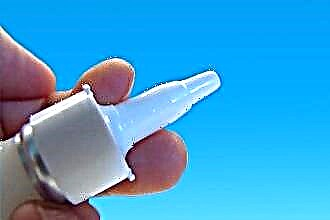Why do professional athletes often have bradycardia?
Low regular heart rate in athletes is called “athletic heart syndrome”. It is often registered in professional athletes, as well as in people who play sports for a long time (more than an hour a day). This is how the body adapts to stress. Despite its "physiological" nature, this condition can mask serious health problems.
In adolescent athletes, bradycardia is often associated with changes in the cardiovascular system and also requires monitoring.
More often, bradyarrhythmia is a consequence of active (more than 5 hours a week) aerobic exercise, less often it occurs when performing static exercises, for example, when lifting weights. During intense, prolonged exercise, the heart pumps more blood to meet the increased oxygen requirements of skeletal muscles. The chambers are stretched, the wall increases in size. As a result, cardiomegaly (enlarged heart) develops and, in particular, left ventricular hypertrophy.
Low heart rate in a trained person: is it good or bad?
In experienced athletes, in a calm state, the heart slows down, and during physical exertion, the frequency of contractions increases sharply (up to 260 beats per minute) for more effective adaptation to stress and the supply of oxygen to the muscles. This is their advantage over beginners. Professionals have a well-developed network of capillaries, which, gradually expanding, contributes to the blood supply and nutrition of the hypertrophied myocardium.
However, if the size of the heart exceeds 1200 cc. cm, a transition to malignant hypertrophy is likely, creating a number of complications in the absence of medical supervision.
Pathological bradycardia
If the training is incorrectly constructed and the loads exceed the functional capabilities of the body, as well as with concomitant diseases, pathological changes occur in the heart. The faster the heart cells grow, the worse the newly formed areas are supplied with blood.
Cells of blood vessels and nerve fibers grow more slowly than muscle cells. Because of this, hypoxia and energy starvation develop. They lead to tissue necrosis - myocardial infarction, with all the ensuing consequences: scarring and possible complications. The unfortunate result of this process is cardiosclerosis and the inability to reach athletic heights in the future.
Tactics and observation of the athlete
Symptoms with worsening bradycardia up to 40 beats per minute are as follows:
- Weakness.
- Dizziness.
- Fast fatiguability.
- Chest pain.
- Dyspnea.
- Deterioration of vision.
- Headache.
- Feeling of lack of air.
- Panic attacks.
- Anxiety.
- Inability to concentrate.
The clinical picture is nonspecific and may indicate another cardiological pathology, therefore it is recommended to immediately seek medical help.
For the diagnosis and differentiation of sinus bradycardia in athletes, the same methods are used as for other categories of patients:
- Survey.
- General clinical analyzes.
- General examination - palpation, percussion, auscultation, pulse measurement.
- Electrocardiography.
- Holter 24-hour monitoring.
- Ultrasound of the heart.
- Stress load test.
If malignant bradycardia is not diagnosed and treated in time, then even against the background of the absence of complaints, the following severe complications may occur:
- Heart failure.
- Cerebral circulation disorder.
- Chronic heart failure.
- Progression of coronary heart disease.
- Acute myocardial infarction.
- Cardiomyopathy.
- The formation of acquired heart defects (mainly - valve insufficiency).
With the development of complications, sports should be postponed until the recovery period. The doctor will determine the functional capabilities of the body and select proportionate loads.
Treatment
When asymptomatic bradyarrhythmias are found, it is usually advised to be more careful with the exercise order. An especially important place is occupied by a full-fledged warm-up, which prepares the body and heart for the upcoming stress. A gradual increase in intensity will protect the myocardium from stress.
In some cases, symptomatic treatment with drugs that increase the heart rate may be required. In case of a malignant course, surgical intervention and the installation of a pacemaker are sometimes necessary.
A separate item is complications against the background of myocardial hypertrophy - valve failure. This pathology requires plastic surgery to correct the defect.
Conclusions
Bradycardia in athletes is closely related to the physiological remodeling of muscle fibers; it is the normal response of the myocardium to aerobic exercise and stress.
The only indicator of bradycardia is often a rare pulse. Athletes do not feel discomfort and are unaware of their condition until they undergo a professional examination.
In addition to bradycardia, the classic triad of the syndrome includes an increase in the size of the heart and myocardial hypertrophy.
In unfavorable conditions, the physiological feature necessary for the body becomes a factor in the development of many complications. A competent approach to sports and regular health monitoring can protect against the unpleasant consequences of myocardial hypertrophy.



